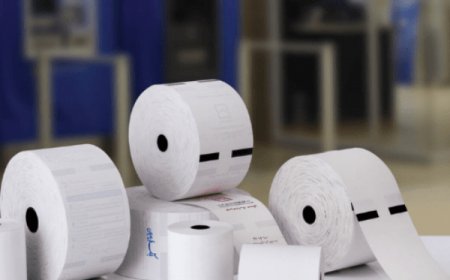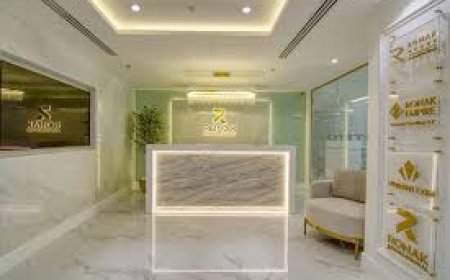The Rib Circular Knitting Machine: A Technological Marvel in Modern Textile Production
Introduction
The textile manufacturing industry has witnessed groundbreaking advancements over the past few decades, with knitting technology playing a pivotal role in shaping modern fabric production. Among the most innovative machines in this sector is therib circular knitting machine, a highly efficient and versatile piece of equipment designed to produce high-quality rib-knit fabrics.
Rib-knit fabrics are widely recognized for theirelasticity, durability, and comfort, making them a preferred choice for various applications, includingapparel, home textiles, medical wear, and automotive interiors. The rib circular knitting machine stands out due to itsautomated operation, precision stitching, and ability to produce complex patterns with minimal manual intervention.
This in-depth article explores theworking mechanism, key performance features, industrial applications, and future trendsof ribcircular knitting machines, providing a comprehensive understanding of their significance in todays textile industry.
Working Principle of the Rib Circular Knitting Machine
Fundamental Mechanism
The rib circular knitting machine operates on arotary needle system, whereneedles on a circular bed interloop yarns to form a continuous tubular fabric. Unlike flat knitting machines, the circular design allows forseamless, high-speed production, making it ideal for large-scale manufacturing.
Key Components & Their Functions
Needle Bed & Cylinder
Thestationary needle bedandrotating cylinderwork in synchronization to create the rib structure.
Thedial needles (horizontal) and cylinder needles (vertical)interlock yarns to form the distinctive rib knit pattern.
Yarn Feeding System
Multiple yarn feeders enablemulti-color and multi-pattern knittingwithout stopping the machine.
Precision tension control ensuresconsistent stitch quality.
Cam System
Controls themovement of needles, determining stitch formation (knit, tuck, or float stitches).
Advanced electronic cams allow forprogrammable pattern changes.
Fabric Take-Down Mechanism
Ensures smooth fabric extraction andprevents deformationsduring high-speed knitting.
Types of Rib Structures Produced
1x1 Rib:Alternating knit and purl stitches for balanced elasticity (common in cuffs and collars).
2x2 Rib:Two knit stitches followed by two purl stitches for enhanced stretchability.
Interlock Rib:A double-layered rib structure for thicker, more stable fabrics.
Performance Characteristics of the Rib Circular Knitting Machine
1. Unmatched Production Efficiency
High-Speed Knitting:Capable of1000+ RPM (revolutions per minute), producinghundreds of meters of fabric per shift.
Automated Yarn Switching:Reduces downtime by automatically changing yarns for multi-color designs.
Quick Setup & Adjustments:Digital controls allow forrapid pattern changeswithout manual reconfiguration.
2. Superior Fabric Quality & Consistency
Precision Stitch Formation:Ensuresno dropped stitches, loose threads, or irregularities.
Excellent Elastic Recovery:Fabrics retain shape even after repeated stretching.
Minimal Yarn Breakage:Advanced tensioners and sensors reduce material waste.
3. Versatility in Design & Functionality
Multi-Pattern Capabilities:Can producejacquard, stripes, geometric designs, and 3D textures.
Customizable Stitch Density:Adjustable for lightweight single-layer knits or dense double-layer fabrics.
Compatibility with Various Yarns:Works withcotton, polyester, spandex, wool, and blended fibers.
4. Cost-Effectiveness & Sustainability
Reduced Labor Costs:Automation minimizes manual handling, cutting workforce requirements byup to 50%.
Energy-Efficient Models:Newer machines consume30% less powerwhile maintaining high output.
Waste Reduction:Optimized yarn feeding systemsreduce material waste by 15-20%.
Industrial Applications of Rib Circular Knitting Machines
1. Fashion & Apparel Industry
Cuffs, Collars & Waistbands:The rib knits elasticity ensures a snug fit inT-shirts, sweaters, and sportswear.
Athletic & Compression Wear:Used inleggings, gym wear, and medical compression garmentsdue to its stretch and recovery properties.
Luxury Knitwear:High-end fashion brands utilize rib knits forscarves, gloves, and premium sweaters.
2. Home Textiles & Furnishings
Elastic Edging for Bedding & Towels:Enhances durability and aesthetics.
Decorative Knitted Fabrics:Used inthrows, cushion covers, and upholstery.
3. Automotive & Technical Textiles
Seat Covers & Interior Linings:The rib structure providesresistance to abrasion and prolonged use.
Industrial Fabrics:Used inprotective gear, filtration materials, and reinforced textiles.
4. Medical & Healthcare Textiles
Orthopedic Supports & Bandages:Rib knits offercontrolled compression and flexibility.
Surgical Garments & Masks:Lightweight, breathable, and stretchable for comfort.
Future Trends & Innovations in Rib Knitting Technology
1. Smart Knitting Machines with IoT Integration
Real-Time Monitoring:Sensors trackyarn tension, needle status, and fabric qualityto prevent defects.
Predictive Maintenance:AI-driven systems alert operators before mechanical failures occur.
2. Sustainable & Eco-Friendly Knitting
Recycled Yarn Compatibility:Machines optimized forupcycled polyester and organic cotton.
Waterless Dyeing Techniques:Reduces environmental impact in post-knitting processes.
3. 3D & Seamless Knitting Advancements
Whole Garment Knitting:Producesfully fashioned apparel with minimal sewing.
Customizable Fit:On-demand knitting forpersonalized clothing sizes.
4. Expansion into Technical & Smart Textiles
Conductive Yarns for Wearable Tech:Integration withheated clothing and health-monitoring fabrics.
High-Performance Sportswear:Enhanced moisture-wicking and temperature regulation.
Conclusion: The Rib Circular Knitting Machine as an Industry Game-Changer
Therib circular knitting machinehas revolutionized textile manufacturing bycombining speed, precision, and versatilityin fabric production. Its ability to producehigh-quality, elastic, and multi-patterned knitsefficiently makes it indispensable acrossfashion, medical, automotive, and technical textile sectors.
With ongoing advancements inautomation, sustainability, and smart knitting, these machines are set to play an even greater role in thefuture of textile innovation. Manufacturers investing in this technology can expecthigher productivity, reduced costs, and a competitive edge in the global market.
As consumer demand for customized, durable, and eco-friendly textiles grows, the rib circular knitting machine will continue to be a cornerstone of modern fabric production, driving the industry toward smarter and more sustainable solutions.
















![Top 9 Real Estate Mobile App Developers in Riyadh, Saudi Arabia [2025 Edition]](https://www.biphoo.uk/uploads/images/202507/image_430x256_6879d0d524335.jpg)

















